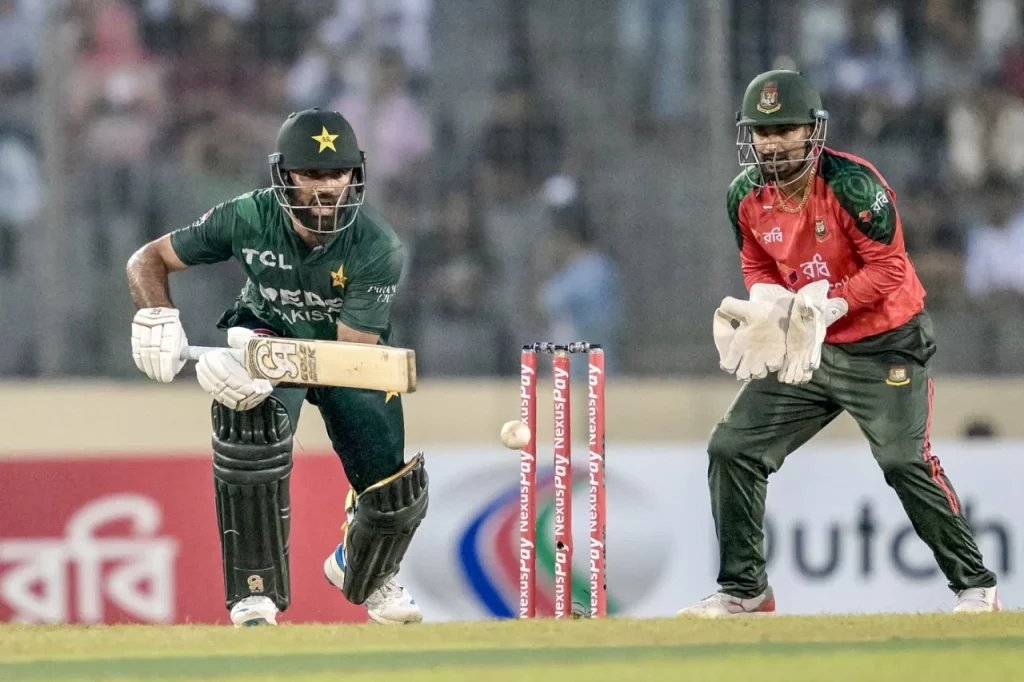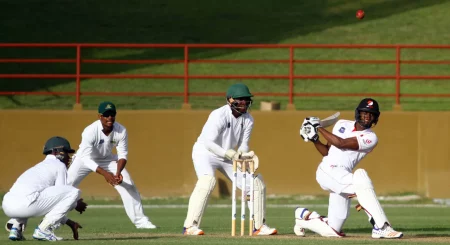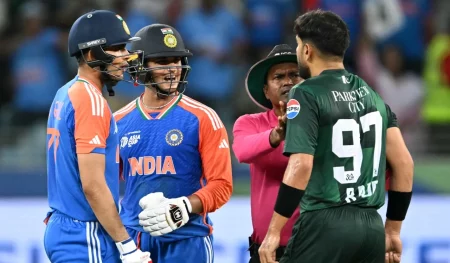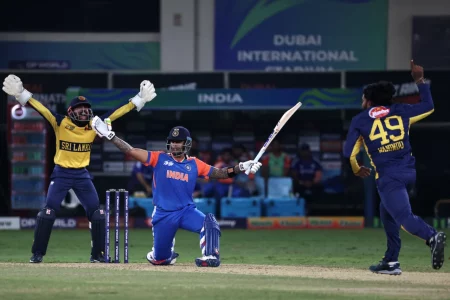Pakistan and Mirpur haven’t been a happy pairing in T20Is. Of the ten lowest aggregates in Bangladesh–Pakistan T20Is, six have come at this venue alone. Sunday’s 222 is now fourth on the list. And while Bangladesh batters looked pretty much at ease gunning down the meagre total, Pakistan’s coach Mike Hesson thinks the surface didn’t offer a fair contest for anyone.
“I think (the pitch) is not ideal for anybody,” Hesson said. “Teams are trying to prepare for the Asia Cup or the (T20) World Cup. It is not acceptable.”
That the surface gave virtually no benefit to the batters was, by no means, a surprise. Dhaka’s surface is notorious for sprouting the wrong kind of surprises. In the last 18 games played here, the 150-mark has been breached only four times. Batting first, Pakistan saw firsthand why this was the case. The visitors lost four wickets within the powerplay, and couldn’t find any stability afterwards. Hesson admitted Pakistan batters made rash decisions, but that doesn’t change how poorly the pitch behaved.
“It is still no excuse for some of the decisions we made with the bat. But this pitch is not up to international standards,” he said.
“We got off to a little bit of a flyer. Fakhar Zaman played four or five shots. It gave us a false indication about how the surface was playing,” Hesson said. “We didn’t help ourselves through the middle. We chose some poor options. When the ball started to nip through, and bounced steeply, we probably didn’t assess that it was a bit more challenging to play high-risk shots. Couple of run-outs also didn’t help.”
Curiously, the surface at the Shere Bangla Cricket Stadium during the recent edition of the Bangladesh Premier League (BPL) games wasn’t as much of a headache. The surface offered plenty of help to batters. For instance, in the Final of the league, both teams scored in excess of 190. Hesson acknowledged that it’s the pitch curation which is to be blamed, which will eventually hurt Bangladesh’s chances away from home.
“You need good cricket wickets to develop cricketers. There was some good wickets during the BPL, to be fair. It is not up to the standard when international cricket is being played.
“I don’t think it helps them when they leave Bangladesh. But I think also batting first in these situations is challenging. When you aren’t quite sure whether 100 or 130 or 150 is good enough. I don’t think (the pitch) is good for anybody. It still doesn’t take away the fact that you have to perform better in any surface. We will look at it as a team.”
Parvez Hossain Emon, who scored an unbeaten 56 off 39 balls at the same pitch in the first game, though, disagreed with Hesson’s observation. He said that the surface surely favours bowlers more but that doesn’t make it a bad pitch, and the biggest evidence for that is how the host batters scored their runs, with little to no signs of struggle.
“We didn’t feel (it was a bad pitch) as we chased it down in less than 16 overs,” he said. “We could have scored 150-160 runs if we batted the full 20 overs. It may be so that they couldn’t adjust to the pitch. We adjusted better than them. The Dhaka pitch usually benefits the bowlers. We tried to assess the wicket quickly. It was our first plan.”



